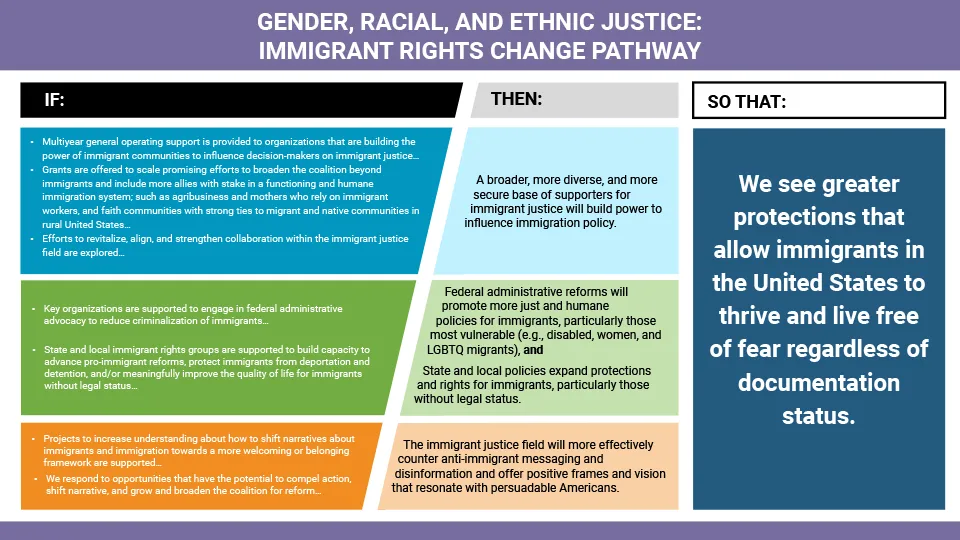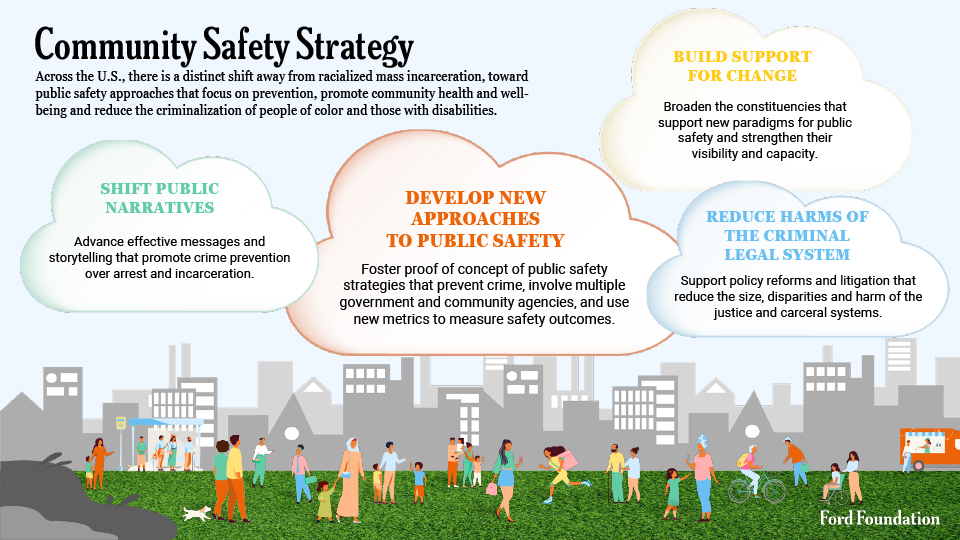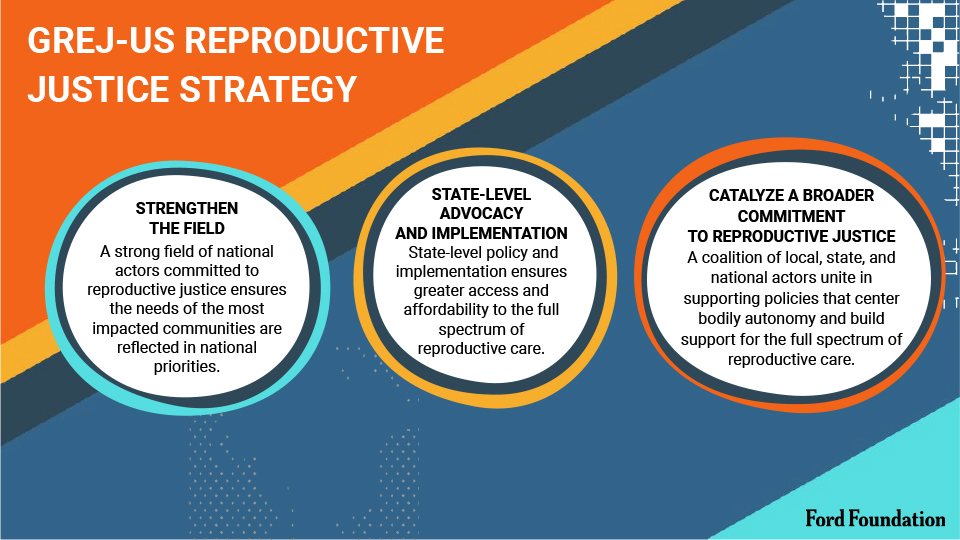U.S. Strategy
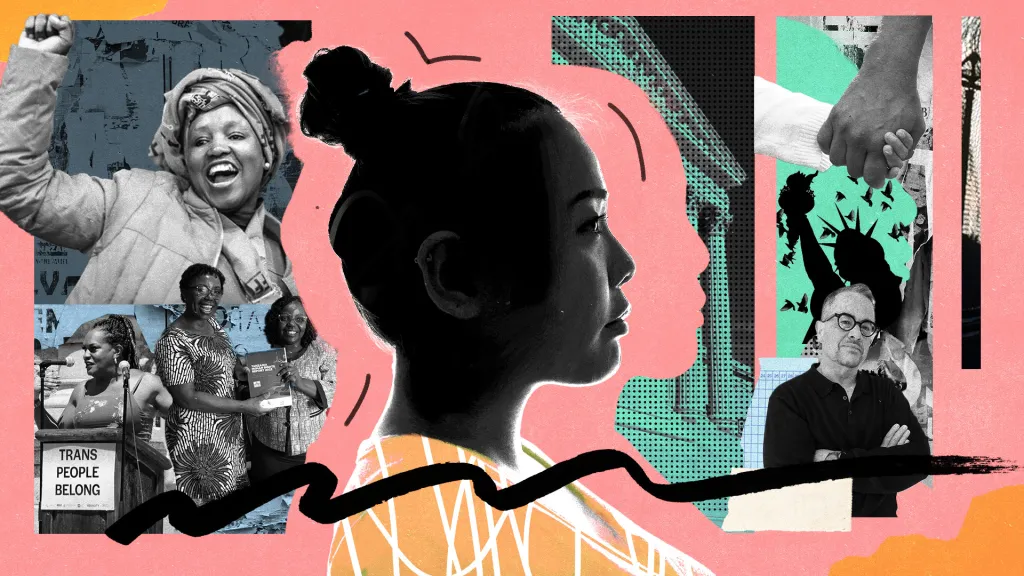
Despite significant progress, structural inequality based on gender, race, class, disability, and ethnicity persists in the United States and is compounded and complicated by today’s challenges. The rollback of abortion rights threatens the strength of our democracy and the health, safety, and economic opportunity of pregnant people and their families. People of color are disproportionately policed and incarcerated. Immigrants and LGBTQ+ people are targeted simply because of who they are.
But today’s realities have helped fuel vibrant new leaders and movements engaging in innovative advocacy and forging powerful alliances. In the United States, advocates are leading new movements for immigrant rights and for racial justice that are challenging xenophobia, standing up for Black lives, and building new public safety models that recognize the humanity of all people. Our work is to support the courageous people and organizations at the center of this fight to achieve lasting political and social change.
We recognize that race, gender, class, disability, and ethnic identity are deeply connected—often inextricably so—and make sure our efforts are rooted in this understanding. It’s an understanding that informs our commitment to shifting repressive power dynamics and strengthening the rights and influence of those most affected by violence, oppression and injustice across the globe.
Immigrant Rights
Immigration is central to the story of the United States. Most Americans can trace their origins to ancestors who fled persecution, political instability, or poverty to make a better life in this country. Immigration also enriches and deepens America’s democracy by making it more culturally, socially, and politically diverse. At the same time, there is strong consensus that our current immigration system is broken and in need of reform. It is time to address the fact that there are millions of undocumented people and inadequate inflow regulations that do not match our modern-day labor and humanitarian needs. As we proceed, we must also center a culture of belonging over a culture of criminalization.
The Ford Foundation’s Immigrant Rights strategy seeks to protect and expand the rights, safety, and overall well-being of all immigrants in the United States, enabling them to thrive and live free of fear, regardless of documentation status. We support efforts to strengthen and broaden the immigrant justice field to advance reforms that promote more just and humane migration policies.
The Challenge
The United States is home to over 45 million immigrants;1 approximately one-quarter of this population, some 10 million people—lacks legal status. Immigration courts and asylum processing systems are overwhelmed while global climate change and rising authoritarianism drive greater numbers of migrants to the United States. Unfortunately, comprehensive immigration reform has repeatedly stalled in a gridlocked Congress, leaving millions of people in literal limbo—in makeshift shelters at the border, in locked detention centers where they are separated from family, or living in fear at the margins of society. The diminishing faith that the government can solve the immigration crisis undermines democracy and creates chaos.
The COVID-19 pandemic demonstrated that immigrants play essential roles in our economy and communities, in particular in the agricultural, food, and health service industries, but anti-immigrant messaging and sentiment continues to grow. Because laws and policies deny them public benefits and services, undocumented immigrants and their family members face innumerable hurdles when it comes to their health, education, and economic security. They experience high rates of poverty, with disabled migrants disproportionately affected.2 Persistent fear of deportation also results in increased rates of depression, anxiety, and severe psychological distress that often goes untreated, especially among children of undocumented individuals.3 Undocumented immigrants may avoid reporting crimes to law enforcement because of fear of discovery and deportation, making them demonstrably more vulnerable to victimization.4
- Frequently Requested Statistics on Immigrants and Immigration in the United States, Migration Policy Institute
- Full Report: Being An Immigrant with Disabilities, Urban Institute
- How the Fear of Immigration Enforcement Affects the Mental Health of Latino Youth, Migration Policy Institute
- Fear of discovery as a deterrent to undocumented Latinx immigrants’ reporting of crimes and the effects of political rhetoric, Rodriguez et al.
The Opportunity
Despite these challenges, there are numerous ways to improve life for immigrants in the short term, while advocating for the longer-term policies needed to secure federal immigration reform. And despite increasingly nationalist rhetoric and conspiracy theories advanced by some public officials and media figures, public polls reveal that 70% of Americans believe that immigrants—and immigration—are good for the country.
In the absence of federal reform, a number of states are moving ahead to enable undocumented residents to obtain a driver’s license or in-state college tuition that allows them to support their families, advance their skills, and thrive. New coalitions that include business leaders, clergy, and local government officials are welcoming immigrants who are revitalizing communities across the US and providing an essential labor source. Over the past decade, a strong, committed movement of younger, directly affected people has emerged to lead a new immigrant rights field that was once dominated by lawyers.
Our Aim and Approach
Our grantmaking largely focuses on two priorities:
State, local, and federal advocacy
We support opportunities at the state, local, and federal levels to improve the lives of immigrants, enabling them to thrive and live free of fear.
Revitalizing a diverse support base
We support expansion of the immigrant justice movement and are particularly interested in efforts that engage new allies and organizations representing the full diversity of experience and identity among immigrant communities across age, geography, gender, race/ethnicity, nation of origin, and more.
Secondarily, we also support exploratory learning on:
Strategic communications and narrative work
We support experimental projects that strengthen the immigrant justice field’s capacity to advance positive narratives about immigrants and immigration in America.
Developing a path forward
We support convenings and other collaborative spaces that bring together leaders to strengthen healthy movement relationships; engage in analyses of macro-level trends; and collectively reimagine an affirmative path toward immigration justice, inclusion, and belonging.
Our Impact
By focusing on efforts to build, expand, and diversify the coalition for immigrant justice and growing the power of immigrant communities to influence the policy landscape, we work toward four medium-term outcomes:
Expanded state and local policies
That increase protections and rights for immigrants, particularly those without legal status.
A broader, more diverse immigrant justice movement
That works effectively to build power and influence immigration policy.
Federal administrative reforms
That promote more just and humane policies for immigrants, particularly those who are most susceptible— people with disabilities, women, and LGBTQ migrants—to discrimination and mistreatment.
Portfolio Snapshot
Annual Budget$7.5 million/year
Build Budget$20 million/5 years
where we work
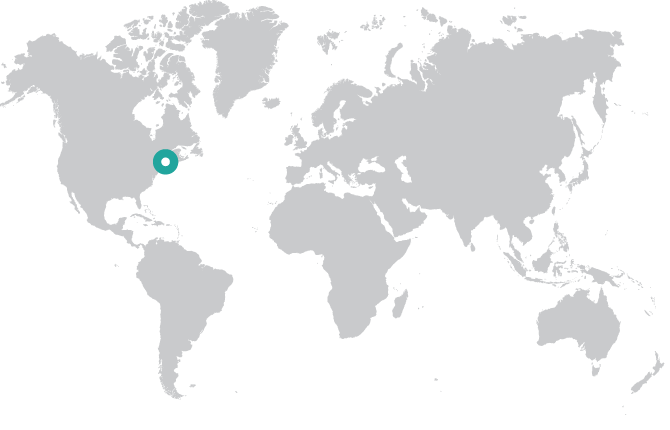
Number of grantees20
U.S. Immigrant Rights Grantee Snapshot
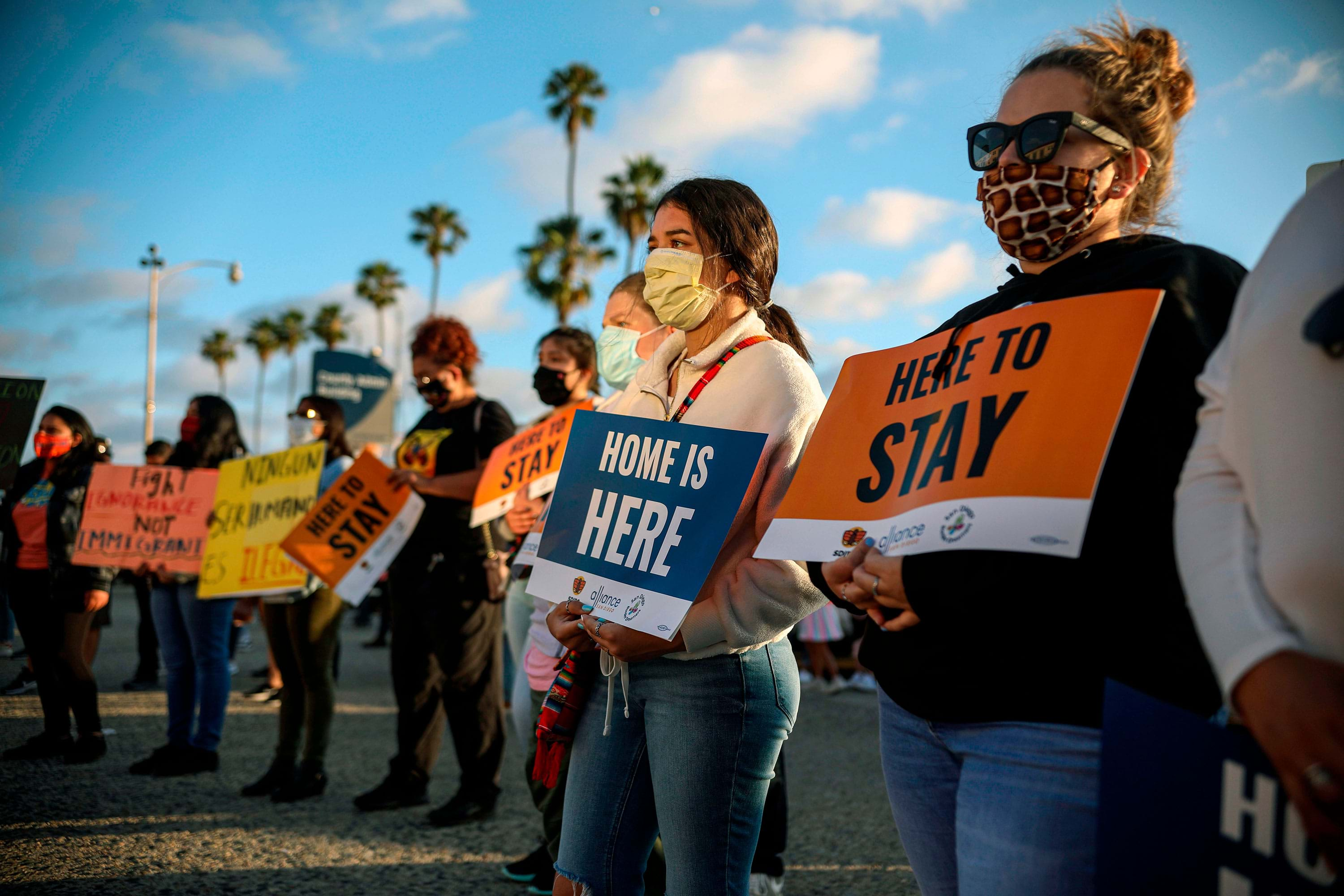
Building a coalition of crusaders
United We Dream (UWD) is the largest immigrant-youth led network with more than 1,200,000 members in 115 autonomous groups across 28 states. UWD builds power by organizing young people and leads local, state, and national campaigns for justice and dignity for all immigrants. UWD is committed to building a multi-ethnic and multi-racial coalition, where leadership of youth, womxn, and LGBTQ people are at the center to strategize, innovate and win.
Community Safety
Our community safety strategy recognizes that everyone wants and deserves to live in safe communities. We support approaches that create and sustain public safety that is effective and also free from discrimination, harm, and violence. There is a need to build new public safety models that recognize the humanity of all people, nurture their capacity for change and growth, and invest in the health, well-being, and advancement of communities that have been historically discriminated against as part of a crime prevention agenda.
The Challenge
The United States leads the world in mass incarceration: Almost two million people are in a prison, jail, youth correctional facility, or immigration detention center. This is just part of the picture; the use of criminal sanctions beyond prisons and jails is at unprecedented levels. A estimated 80 million people—almost one in three adults in the U.S.— some form of criminal record.2
The U.S. criminal legal system is based on the 13th Amendment, which was designed to maintain wealth, power, and white supremacy. People of color are disproportionately impacted by this criminal legal system, which also targets immigrants, poor, disabled and LGBTQ people, particularly LGBTQ youth and transgender people.
The public is fed a narrative that distorts the system’s racist history. This story purports that mass incarceration—and a growing criminal legal system—is necessary to public safety. In reality, high rates of incarceration have not bolstered public safety.
The system is broken. Recidivism rates average between 60% to 70% across the country, and the $180 billion spent each year comprises real opportunity loss. These funds would be better spent on critical services, transformative programs, and infrastructure that make communities safe, healthy, and vibrant.
The criminal justice system affects millions of people and has dire, existential consequences that last beyond incarceration periods. The collateral consequences of individual criminal convictions can create life-long barriers to accessing education, housing, and jobs.1 People returning home from prison make an average $20,000 less annually than peers with similar socioeconomic backgrounds but no conviction history; this lower earning potential affects the economic well-being of entire families. Children of incarcerated parents are more likely to experience future involvement in the criminal legal system and see decreased educational attainment, creating an intergenerational cycle of poverty.2
The Opportunity
Despite the racist legacy and dynamics behind the U.S. criminal legal system, real progress is being made to mitigate mass incarceration. Incarceration levels dropped by 25% from a peak of 2.3 million people in 2009 to 1.9 million in 2021.3 Additionally, in the past two decades, a powerful grassroots movement has helped mitigate harsh sentencing, ending unnecessary pre-trial detention and reinvesting prison savings into effective programs that reduce crime and victimization. There have been similarly positive trends in the reduction of racial disparities in incarceration: In the 21st century’s first two decades, the gap between Black and white imprisonment fell by 40%, a decrease attributable to a waning focus on drug offense enforcement in Black communities.4
At the same time, rising crime during the COVID-19 pandemic encouraged scapegoating and diminished justice reform efforts. Many decarceration reforms have stalled since 2020, but are still sorely needed to reduce the scope and harm of a bloated criminal legal and carceral system. Better communication is critical to debunking false narratives about what drives crime; we also need to expand and build support for alternative public safety approaches.
Alternative public safety strategies are eminently scalable. Two specific emerging models are especially promising and ripe for further investment. Community Violence Interruption (CVI) addresses gun and other community violence, and 911 alternative first responders who can address public disorder incidents and minimize unnecessary escalation, arrests, and incarceration.
- Poverty and Opportunity Profile: American with Criminal Records, The Sentencing Project
- Collateral Consequences and the Enduring Nature of Punishment | Brennan Center for Justice
- There Are Fewer People Behind Bars Now Than 10 Years Ago. Will It Last? | The Marshall Project
- Racial Disparities in State Imprisonment Declined Substantially from 2000 to 2020 – Council on Criminal Justice.
Our Aim and Approach
Our Community Safety portfolio prioritizes the following integrated approaches:
Upstream public safety strategies
We support and convene organizations creating early intervention public safety strategies that emphasize community-based violence interruption (CVI) and non-police, first response programs. CVI outreach workers focus on prevention, connecting with the people at greatest risk of engaging in and becoming victims of violence. In addition, because most 911 calls report disorder complaints or non-violent incidents that do not require armed police officers, many jurisdictions are dispatching trained social workers or public health professionals to address incidents, and connect people to supportive services, and decriminalize mental illness.
New public narratives
We support accessible, responsible, and influential communications and storytelling that counters misinformation and builds public support for non-carceral crime prevention and interventions.
A mobilized, broader base
We support organizations working with diverse stakeholders and building diverse coalitions committed to legal reform and prevention-based community safety approaches.
Disability, racial, and gender justice
We work to strengthen public funding for community-based mental health services and for gender- and culturally-specific services, policies, and strategies. We also support improved access to disaggregated public data that promotes transparency and accountability.
Our Impact
We advance new paradigms to achieve community and public safety and shift the U.S. from a country that prioritizes mass criminalization and incarceration to one that enforces public safety policies focused on crime prevention and healthy, thriving communities—particularly for people of color, women, LGBTQ+ individuals, and people with disabilities.
We work toward five outcomes:
Increased public funding for prevention-based public safety programs
Federal, state, and local governments increase funding for public health oriented, prevention-based public safety policies, programs, and infrastructure that prevent crime while bypassing the criminal legal system.
New public narratives to fight/stem the rising backlash against criminal justice reform
The reform field appeals to a broad audience and successfully counter “tough-on-crime” disinformation with compelling non-carceral crime prevention narratives.
Evidence-based crime prevention infrastructure
Local jurisdictions experiment with coordinated, multi-system and multi-sector public safety structures, strategies, and metrics, creating a new evidence base for crime prevention.
A broader support base committed to change
A broader, more diverse supporter base is active, advocating policy changes that will reduce the criminal legal system harms and advance non-carceral public safety strategies.
Decreased disparities
An increase in state and local policies and practices that reduce the criminal legal system’s harm, scope, and disparities—by race, gender, and disability.
Portfolio Snapshot
Annual Budget$8.2 million
where we work

Number of grantees19
U.S. Community Safety Grantee Snapshot
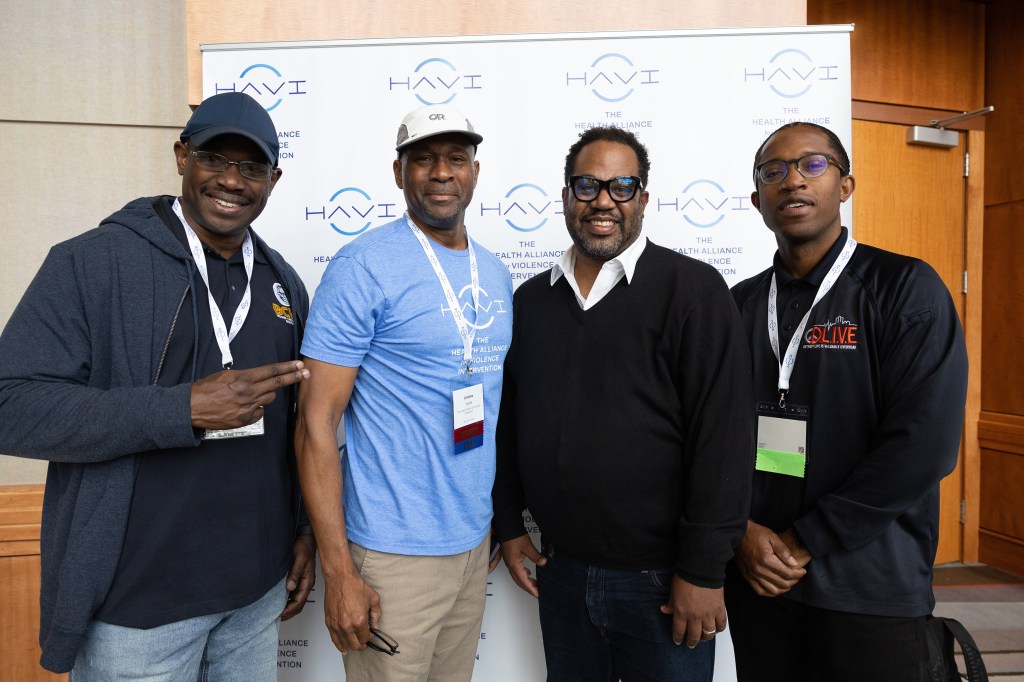
The Health Alliance for Violence Intervention
The Health Alliance for Violence Intervention (HAVI) is a national organization that works to heal communities affected by violence by fostering a network of hospital-based community-based violence intervention programs (HVIPs) and promoting equity for victims of violence. The HAVI network emerged from some of the earliest pioneers in the development of HVIPs, which are a critical component of a comprehensive community violence intervention (CVI) ecosystem. These multidisciplinary programs combine the efforts of medical staff with trusted community-based partners to provide safety planning, services, and trauma-informed care to violently injured people, many of whom are boys and men of color. The HAVI serves over 85 cities in the U.S. and beyond, providing training and technical assistance as well as support with strategic communications, policy development, peer learning, and research. In addition, the HAVI works to shift narratives about violence and trauma in communities of color and partners with its members to advance policy and research that address violence as a public health emergency.
Reproductive Justice
Our reproductive justice strategy seeks to provide a pathway toward better reproductive health and equity for all. It is centered on three core values: the right to have a child, the right to not have a child, and the right to parent a child or children in safe and healthy environments. Our focus is on the policies impacting people who are already pregnant and facing barriers to either having an abortion or giving birth. Therefore, we support approaches that defend and advance bodily autonomy, safeguard and expand abortion access, and strengthen more community-based approaches to reproductive health care.
The Challenge
There are deep structural inequalities in access to healthcare in the United States, resulting in a disparate impact on pregnant and birthing people of color. In 2021, the U.S. maternal mortality rate was 32.9 per 100,000 live births—more than 10 times the rates of other high-income countries.1 For Black women in the United States, maternal mortality rates skyrocketed to 69.9 deaths per 100,000 live births, 2.6 times the rate of white American women.2 American Indian and Alaska Native women were two times more likely to die of pregnancy-related causes than their White counterparts.3
For transgender people, access to fundamental reproductive and hormonal care is particularly challenging due to deep prejudice and politicization, which has resulted in 20 states now restricting care in various forms for transgender people.4
For people with disabilities, there is also a significant dearth of appropriate care, due in part to inaccessible facilities, prejudice against their sexual and reproductive freedom,5 and lack of appropriately trained providers.6,7,8 One in four adults with a disability is less likely to receive timely prenatal care or counseling on contraception, leaving them at greater risk for adverse pregnancy outcomes.9
Despite how pregnancy, birth, parenting, and abortion are interconnected journeys, with many people experiencing both abortion and childbirth as parts of their reproductive experience, abortion is often siloed from the rest of reproductive care and general healthcare. Abortion access is increasingly threatened by politicization and criminalization, which undermines key tenets of democracy itself.
The Opportunity
Even as the environment remains challenging, the reproductive justice movement has made significant strides since 2022 when the Supreme Court overruled Roe v. Wade in Dobbs v. Jackson, taking away the constitutional right to abortion. At the one-year anniversary of the Dobbs decision, there is an abundance of evidence that the ruling and subsequent restriction of abortion access have galvanized more Americans to support the right to abortion than ever before. Two-thirds of Americans now oppose the elimination of the constitutional right to abortion, with 54% strongly opposed, and 78% of the public says the decision of whether to have an abortion should be made by a woman and her doctor without regulation by law.10
Today, the field is also led by a more diverse coalition guided by the priorities, perspectives, and leadership of people who have been historically excluded, including BIPOC women, trans and gender-nonconforming people, and those who reside in rural and non-coastal geographies.
The reproductive justice movement is working to ensure that community perspectives previously left out of these conversations are incorporated into advocacy efforts. Leaders are working with healthcare centers to address racial disparities by implementing community health models, like doula care, that provide better support to women of color. They are building coalitions with allies that include doctors, doulas, midwives, and faith leaders, as well as trans rights advocates and the broader LGBTQ+ rights movement. In many communities where gender-affirming care is under attack, reproductive justice advocates are organizing in solidarity with trans rights advocates to protect the self-determination of all people.
- https://www.commonwealthfund.org/blog/2022/us-maternal-mortality-crisis-continues-worsen-international-comparison including Australia, Austria, Israel, Japan and Spain – all of which have rates that hover between 2 and 3 deaths per 100,000.
- Even Black women with high education levels experience higher levels of maternal mortality than white women, with Black women who completed college being five times more likely to die from pregnancy-related causes than white college graduates.
- https://www.cdc.gov/mmwr/volumes/69/wr/mm6937a1.htm#:~:text=Fetal%20deaths%20in%20the%20United,%
- https://www.americanprogress.org/article/protecting-advancing-health-care-transgender-adult-communities/
- https://journalofethics.ama-assn.org/article/reproductive-rights-and-access-reproductive-services-women-disabilities/2016-04
- https://www.americanprogress.org/article/reproductive-justice-for-disabled-women-ending-systemic-discriminati on/
- https://pubmed.ncbi.nlm.nih.gov/26847669/
- https://www.contemporaryobgyn.net/view/reproductive-health-care-for-adolescents-with-disabilities-requires-special-consideration
- https://disabilityinsider.com/2022/08/09/law/bill-to-help-women-with-disabilities-access-reproductive-health-car e/
- https://www.washingtonpost.com/politics/2023/05/18/abortion-bans-republicans-2024/
Our Aim and Approach
Our Reproductive Justice portfolio prioritizes the following integrated approaches:
State-level advocacy and implementation
Mitigate the harms from abortion bans by supporting reproductive justice organizations in states where abortion is legal. Support organizations in states where abortion is banned to realize better reproductive justice outcomes.
Catalyze a broader commitment to reproductive justice
Unite the reproductive justice field with other social justice movements, including trans and disability rights and racial justice, to create a cohesive solidarity agenda focused on the reproductive health needs of the most impacted communities.
Strengthen the field
Provide longer-term and multi-year support to national organizations that (1) focus on policy development, advocacy, and organizing; (2) have proven track records of state- and regional-level work; (3) are BIPOC-led with deep connections to most impacted communities; (4) are committed to advancing accessible and affordable reproductive health care; and (5) are working to increase alignment within the reproductive justice field.
Our Impact
Pregnant people in the United States receive more support and have the protections necessary to choose to have or not have a child safely. To achieve this, we work towards four outcomes:
A strong field of national actors
Committed to reproductive justice that coordinates national priorities to reflect the most affected communities.
An increasingly diverse coalition
Of local, state, and national actors that expands public support for the full spectrum of reproductive care.
State-level policy and implementation
To ensure greater access and affordability for the full spectrum of reproductive care.
A solidarity agenda
That aligns reproductive justice with other social justice movements to center the reproductive health needs of the most impacted communities.
Portfolio Snapshot
Annual Budget$8.1 million
where we work

Number of grantees23
U.S. Reproductive Justice Grantee Snapshot
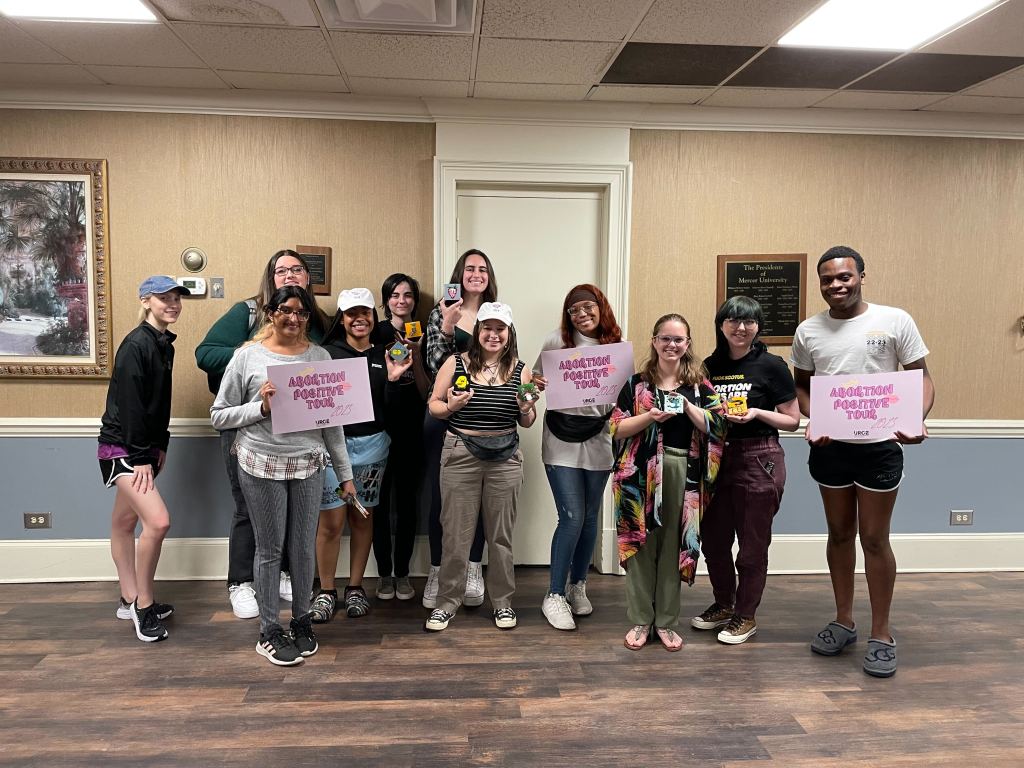
URGE: Unite for Reproductive and Gender Equity
URGE is a reproductive and gender justice organization that works to support the leadership and advocacy of young people of color who are women, queer, trans, nonbinary, and people of low income. As a state-driven national organization, URGE organizes communities, advocates for meaningful policy change, mobilizes young voters, and shifts culture, working in states where the challenges and opportunities are greatest. URGE envisions a world where people can live with justice, love freely, express their gender and sexuality, and create families of their choosing.
